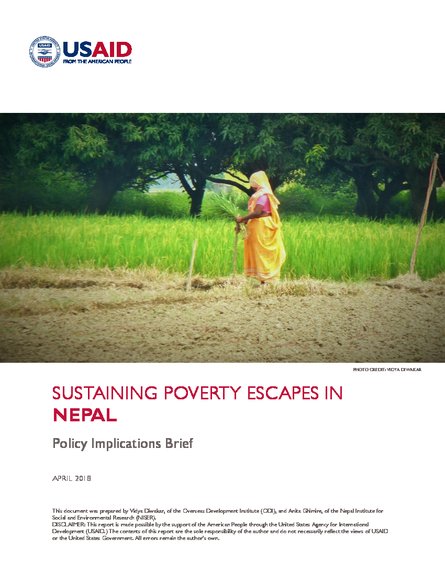
A poverty dynamics lens conceptualises resilience as the set of capacities which allows households to escape and sustainably stay out of poverty. It suggests that efforts to reach zero poverty need to recognise the phenomenon of poverty as dynamic. While many individuals and households escape poverty and remain out sustainably, others escape but then fall back into poverty, while others become impoverished over time and/or remain poor over extended periods of time. Research by CPAN, supported by USAID’s Center for Resilience, investigated the extent and drivers of transitory and sustained escapes from poverty across a series of country studies to better understand the sources of resilience that enable people to sustainably escape poverty given the complex risk environments in which they live.
This brief draws on results of mixed methods research in Nepal to offer policy and programming implications for sustained poverty reduction and it advocates a portfolio response to poverty reduction that incorporates a sound understanding of poverty dynamics. In doing so, it focuses on three areas:
- Mitigating life cycle effects, particularly through social protection
- Reducing and diversifying livelihood risk, with a focus on agriculture and migration
- Fostering norm change interventions through a negotiated approach